The surging demand for miniaturized devices in electronics, biotechnology, automotive, and aerospace is putting increased interest in the development of microscale additive manufacturing technologies. This 3D printing method can produce tiny parts and components in shapes not possible with traditional manufacturing, faster and at much lower costs.
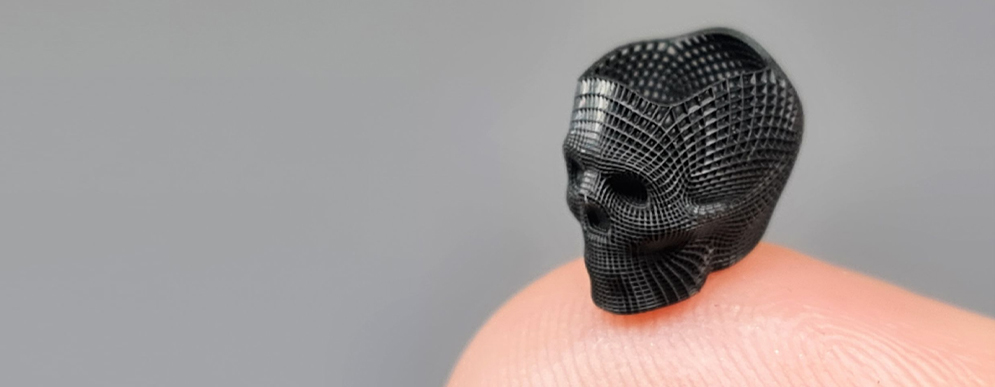
As the world moves to 5G bandwidth, these high frequencies and short wavelengths mean tiny antennas and structures; as micro semiconductors find a place in products all around us, the need for micro heat exchangers grows; and as medical treatment becomes more patient-specific, there’s a growing need to make individualized medical devices and implants, such as stents.
Although used mostly in research and prototyping at the moment, microscale additive manufacturing is showing great promise for end-use applications from wearable and embedded sensors to printed circuit boards to 3D printing with living cells. Applicable to a wide range of industries, below are just some of the current uses with more detail in the section: Who’s Using Micro 3D Printing Now?
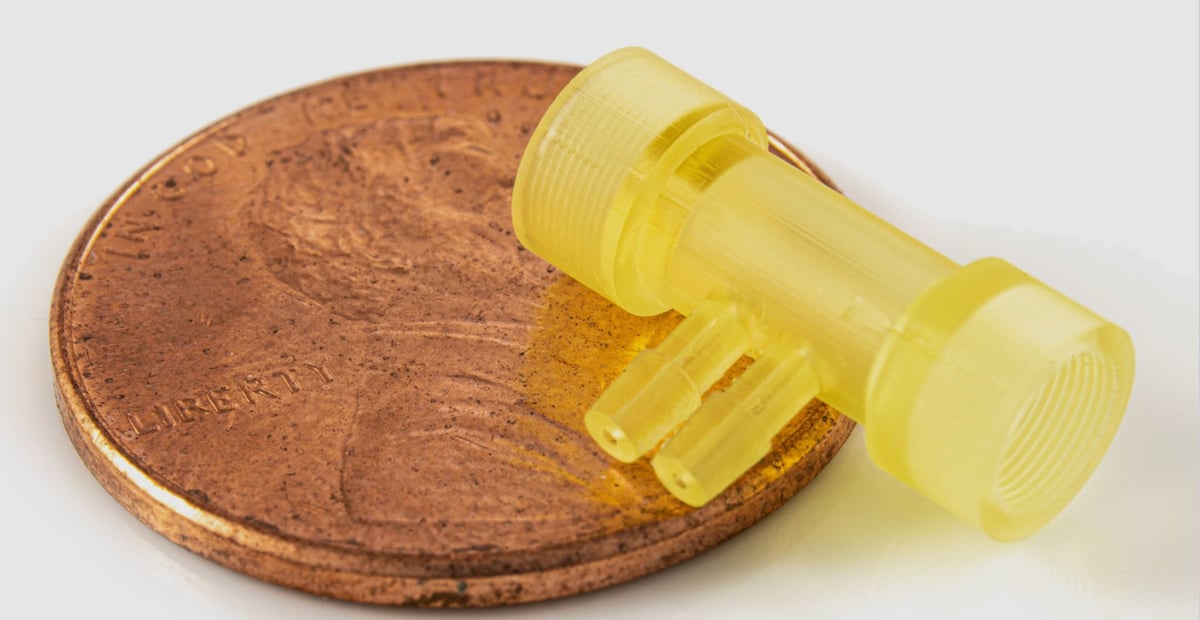
Applications of Micro 3D Printing:
- electrical components
- microchip components
- microfluidic devices
- drug-delivery microneedles
- vascular stents
- micro-scale molds
- electro-mechanical parts for optics & photonics
- micro electromechanical systems (MEMS)
- micro-opto-electro-mechanical systems (MOEMS)
- micro-optical electronics systems (MOES)
Although traditional manufacturing techniques (like microinjection molding, micromachining, and etching) can produce precise tiny parts, such processes are complex and costly (especially for prototypes, single, or small batch items), and not many companies exist that can do the work. Additive manufacturing on the microscale provides an alternative to traditional manufacturing, with high-resolution and high-precision parts that are viable for production even up to hundreds of thousands of parts. There are even on-demand services to micro 3D print your part (featured below) if you’re not in a position to purchase your own machine.
Let’s take a look at the technology, uses, machines, and services that are at the forefront of micro 3D printing.
Micro 3D Printing Tech

To get a sense of the type of tiny we’re talking about here, a good commercially available professional 3D printer for jewelry or medical 3D printing, such as the RapidShape I100+ or the Formlabs Form 3B, can achieve resolutions around 25 – 75 microns (μm), but micro 3D printing gets much smaller.
Additive manufacturing on the microscale generally refers to the production of parts measured in single-digit microns down to a layer thickness of 5 microns and a resolution of 2 microns. Some technologies can even print parts measurable in nanometers (nm), which is 1,000 times smaller than a micron. For reference, the average width of a human hair is 75 microns and a strand of human DNA is 2.5 nanometers in diameter.
This technology is being used today in everything from luxury watch design to aerospace to medtech and more.
Most micro 3D printing is accomplished through resin printers, or more specifically, photopolymerization reactions with light. Some companies, however, have begun moving beyond polymers and into the realm of metals, including steel, copper, and gold. Let’s take a look at the five major categories of micro-additive manufacturing technology.

Microstereolithography (µSLA)
This process is in the vat polymerization family. It involves exposing photosensitive material (liquid resin) to an ultraviolet laser. The general process is the same as for most commercial resin printers: pour resin into a tank, lower a build platform into the resin, a laser draws a cross-section of the 3D part, layer by layer, while the platform is lowered into the chamber. The difference with µSLA is specialized resins and the sophistication of the lasers and the addition of lenses that are capable of generating almost unbelievably small points of light.
Projection Microstereolithography (PµSL)
This additive manufacturing technique is growing due to its low cost, accuracy, speed, and also the range of materials that it can use, which include polymers, biomaterials, and ceramics. It has shown potential in applications ranging from microfluidics and tissue engineering to micro-optics and biomedical microdevices.
The PµSL process is similar to µSLA, except that instead of a laser, PµSL uses ultraviolet light from a projector. It’s quite similar to digital light processing (DLP) resin 3D printing technology you’ll see in 3D printers from companies, such as Carbon. The technique allows for rapid photopolymerization of an entire layer of liquid polymer using a flash of UV light but at micro-scale resolution, so it’s significantly faster.
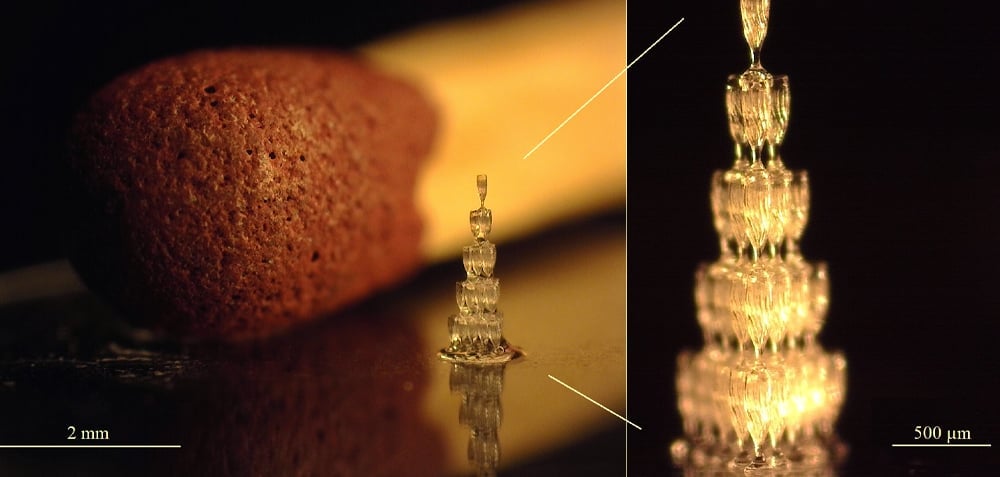
Two-Photon Polymerization (2PP or TPP)
This technology has shown to provide the highest accuracy among micro 3D printers. It is being used for promising medical innovations including tissue engineering and medical implants, as well as industrial applications, including micromechanics. But the technology and materials are still very expensive and the printers can be slower than other technologies.
In this method, a pulsed femtosecond laser is used to trace 3D patterns in the depth of the vat of special photosensitive resin. We won’t go into the weeds of the science here, which involves absorbed and generated photons, but know that the technology enables resolutions of less than 1µm, which is considered a nanofabrication technology. For a more in-depth look, check out our article below.
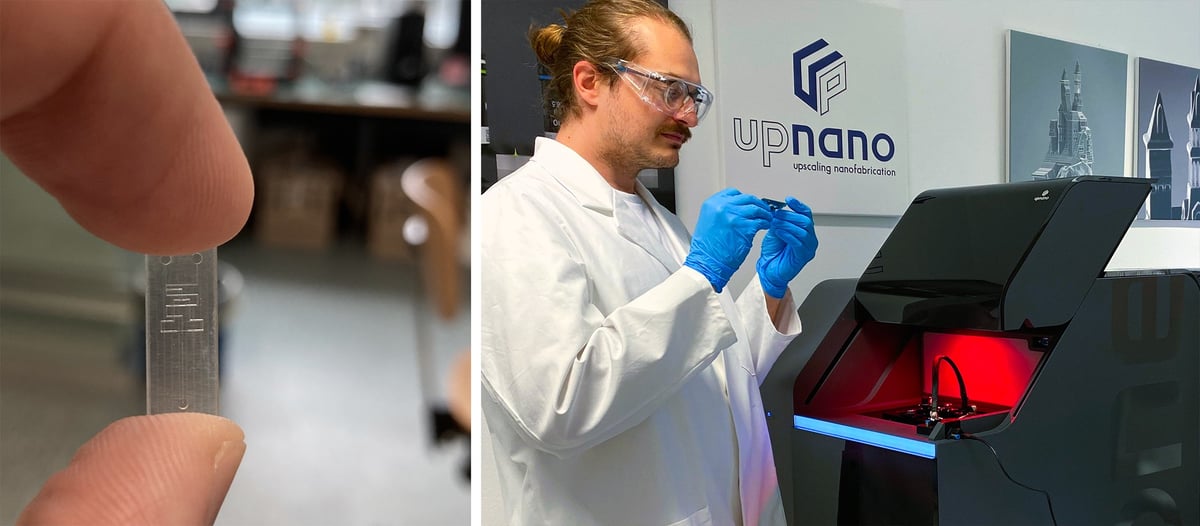
Lithography-based Metal Manufacturing (LMM)
This metal 3D printing method creates tiny metal parts for applications including surgical tools and micromechanical parts, using some of the same principles of photopolymerization. In LMM, metal powder is homogeneously dispersed in a light-sensitive resin and then selectively polymerized by exposure with blue light. After printing, the “green” parts have their polymer component removed leaving fully metal “brown” parts that are finished in a sintering process in a furnace. Feed stocks include stainless steel, titanium, tungsten, brass, copper, silver, and gold.
Electrochemical Deposition
At the cutting edge of micro metal 3D printing technology is the Swiss company Exaddon, which developed its own metal micro 3D printing process that does not require any post-processing. In this process, a printing nozzle delivers a liquid containing metal ions through a microchannel onto a print surface. These ions dissolve into solid metal atoms which grow into larger building blocks (voxels) until the object is complete.
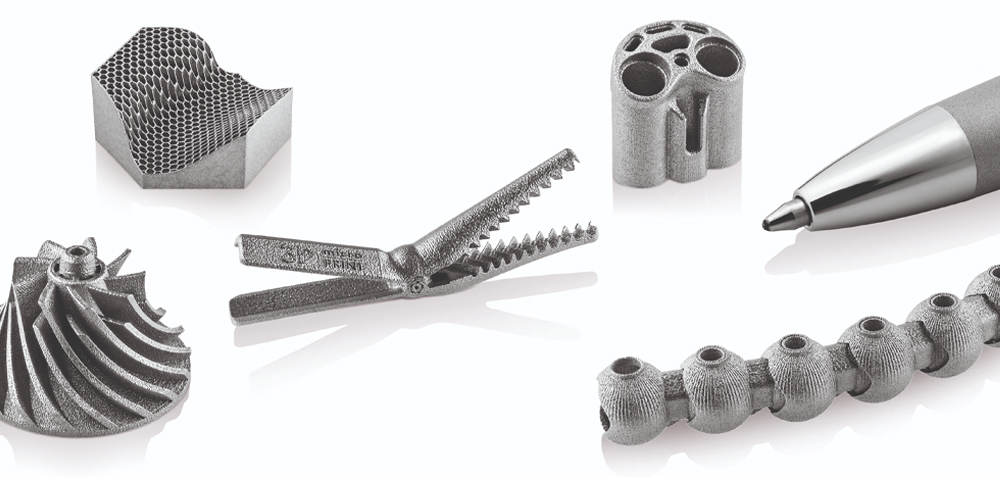
Micro Selective Laser Sintering (μSLS)
This powder bed fusion-based additive manufacturing is essentially selective laser sintering (SLS) on a tiny scale and often called micro laser sintering. Although SLS usually refers to a process with plastics, here μSLS more commonly refers to a laser sintering process with metals. μSLS can produce true 3D metal parts with sub-5 μm resolution and a throughput of greater than 60 mm3/hour.
In μSLS, a layer of metal nanoparticle ink is coated onto a substrate then dried to produce a uniform nanoparticle layer. Next, laser light that has been patterned using a digital micromirror array is used to heat and sinter the nanoparticles into the desired patterns. This set of steps is then repeated to build up each layer of the 3D part in the μSLS system.
Micro 3D Printing Pros & Cons

PROS
- Faster compared to traditional manufacturing. Traditional manufacturing using micro injection molding or micromachining is very expensive as well as time-consuming because it requires developing tooling. In that sense, micro 3D printing is a cost-effective solution for applications in the thousands, even up to hundreds of thousands of parts.
- Micro 3D printing is a low-cost option for prototypes and volumes of end-use parts.
- Greater design possibilities. Micro 3D printing has the ability to produce more complex designs than in traditional manufacturing, for example, lighter-weight parts through printing complex geometries including lattice infills.
CONS
- High cost for quality. It is difficult to list many negatives to such a potentially useful new technology. Still, at this time, a main disadvantage of micro 3D printing is that applications with high quality and functionality are expensive, for both the technology and the materials, although still lower than micromachining.
- Currently, materials are somewhat limited. While some companies are developing micro 3D printing processes using metals and other materials, at present the technology is mostly used with specialized polymers.
Who's Using Micro 3D Printing Now?

As mentioned above, vast majority of micro 3D printers currently live in university labs and research centers, where they are used to create a wide range of parts for prototypes and experiments. But micro 3D printing is also used for end use products and devices.
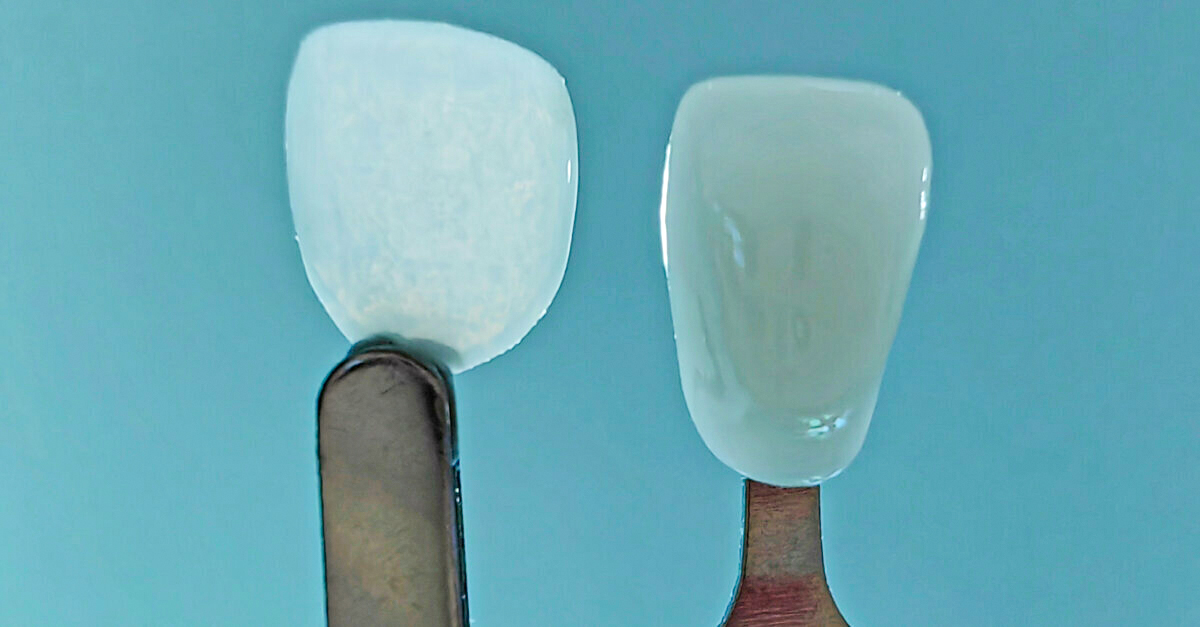
Ultra-Thin Dental Veneers
Start-up UltraThineer has introduced the world’s “thinnest cosmetic dental veneer,” it says made with micro 3D printing. The company uses projection micro stereolithography (PµSL) from Boston Micro Fabrication to produce veneers that are three-times thinner than traditional options and require less preparation for dental professionals, allowing preservation of the patient’s enamel with less reduction. UltraThineer veneers are expected to be available in US in the spring of 2024, following review by the US Food and Drug Administration (FDA).
3D Printed Microneedle Patches for Vaccine Distribution
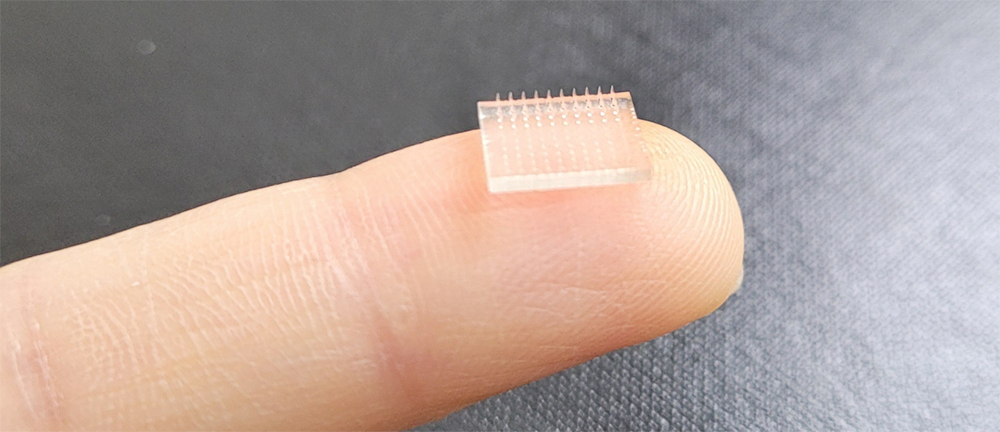
Scientists at Stanford University and the University of North Carolina at Chapel Hill have created a 3D printed micro-needle patch in Sept. 2021 that may enable people to painlessly self-administer vaccines.
The needle patch was found to provide 10-times greater protection than a typical vaccine shot delivered into an arm muscle with a needle jab, according to a study conducted in animals and published in the Proceedings of the National Academy of Sciences.
The additive manufacturing technology for the microneedle patch comes from Carbon, the 3D printer maker. Although microneedle patches have been studied for decades, the work by this latest group of scientists overcomes some past challenges, specifically the ability to easily customize the patches and the ability to print patches that retain their sharpness.
3D Printed Vascular Stents

Cardiovascular stents implanted in the coronary artery to improve blood flow to the heart come if a range of sizes, but 3D printed ones can be specifically matched to each patient’s unique need. The stent pictured above was printed with the MicroArch P140 from Boston Micro Fabrication and measures about 15.4 x 3.4 mm.
Although mostly still experimental, the ability to 3D print stents is expected to improve sizing options, preserve essential anatomy, and enable diameters and shapes to suit individual patient requirements. The process could also allow for individual stents to be made on-site, under the surgeon’s direction, reducing inventory and saving money.
Last year, researchers at CSIRO, Australia’s national science agency, launched their 3D printed, tailor-made stents to treat narrow or blocked arteries. These self-expanding nitinol stents for Peripheral Arterial Disease patients could shorten recovery times.
3D Printed Intricate Consumer Products

A fine watch may be the first thing that to pops to mind when it comes to micromechanics, and indeed, microscale 3D printing has its place in watch and jewelry making. From purely decorative designs to enabling manufacturers to imbed micro-watermarks on their creations, microscale 3D printing has a growing following in the timepiece market, especially for customized products and manufacturing spare parts that are no longer available.
Semiconductor Defect Repair
Increasing yield in semiconductor chip production is one of the most persistent goals for microchip manufacturers, but damaged dies or molds can increase the failure rate during production. With metal microscale 3D printing, semiconductor defect repair is possible, directly on a die, according to micro 3D printer manufacturer Exaddon. High-quality pure metal can be deposited with submicrometer accuracy, directly to the required location.
Rapid 3D Print Microfludic Research Devices
For researchers studying the physical and chemical properties of liquids and gases at the microscale, the use of Microfluidic devices is common. These devices also can be used to sort cells based on protein expression, which is research ongoing at the Kelley Laboratory at the University of Toronto. But what’s new there is the lab’s micro 3D printer, which enables researchers to print their own microfluidic devices at a fraction of the cost and time compared to ordering the devices from a provider. In fact, owning a printer enables the lab to print out in 20 minutes what it used to take three days to order in an external facility using photolithography.
Add these projects to the development of new materials, described above, along with breakthroughs in nanometer-scale printing, and it is clear that micro 3D printing has the potential to revolutionize fields from medicine to additive manufacturing itself.
Micro 3D Printers
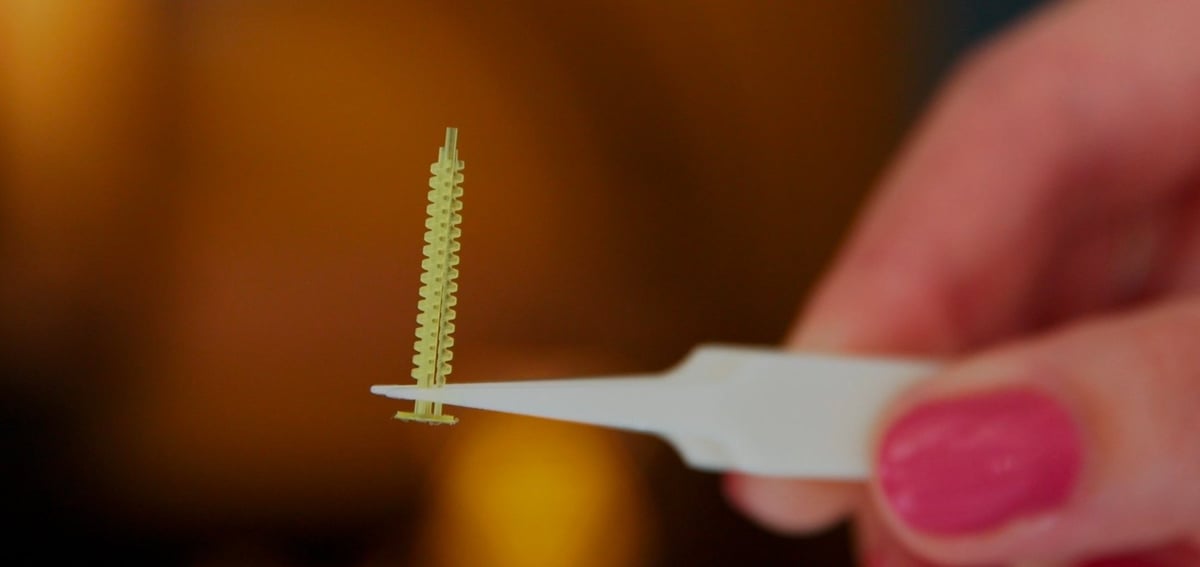
Boston Micro Fabrication

Boston Micro Fabrication (BMF) uses PµSL technology in its line of printers, boasting fast production times and resolutions between 2 µm and 50 µm. BMF’s PµSL printers have applications from microfluidics to electronics to Medtech.
The MicroArch S230 resin 3D printer is the company’s third printer in its series of ultra-high resolution (2 micron) printers. However, setting it apart from the others is the ability to print in ceramic as well as photopolymers, plus it has a larger build size (50 x 50 x 50 mm).
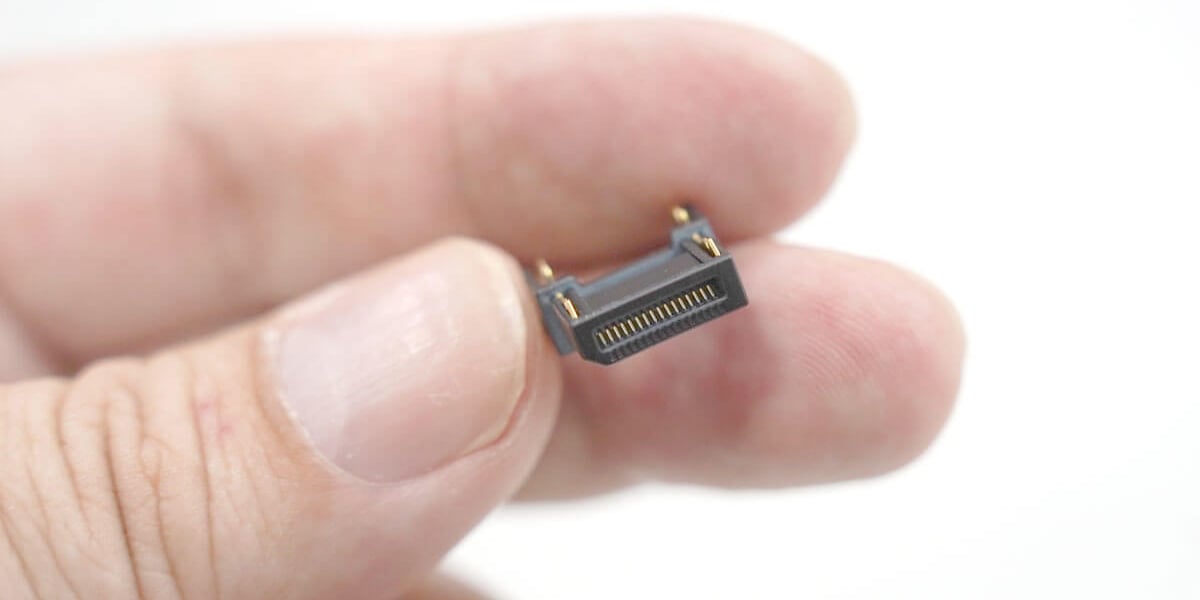
Additional features of the MicroArch S230 include active layer leveling, automated laser calibration, and the capacity to handle higher molecular weight materials with viscosities of up to 20,000 Cp, resulting in strong functional parts. The printer is compatible with a growing portfolio of engineering and ceramic resins suitable for end-use parts, including alumina ceramic, HT 200, and magnesium titanate ceramic.
“The miniaturization trend continues to dominate nearly every industry, but as parts get smaller, they become harder to design, more expensive to manufacture, and generally more complicated to put into production,” says John Kawola, CEO of BMF. “We changed that notion and brought 3D printing to industries that once deemed it impossible.”
Nanoscribe
German-based company Nanoscribe, a BICO company, as the name implies, makes 3D printers that print nano-size things for research lab and industrial manufacturing processes, such as microfluidics and microelectromechanical systems. Its Quantum X Shape is a high-precision 2.5D and 3D printer for microfabrication and wafer-scale batch production.
Based on two-photon polymerization (2PP) technology, this laser-lithography system can print virtually any 3D shape with submicron precision of 0.0001 mm, accuracy of 0.0002 mm, and a maximum print area of 50 x 50 mm². Last month, Nanoscribe introduced a new 3D technology called Two-Photon Grayscale Lithography (2GL) it says is now setting entirely new standards for 3D nano- and microfabrication. The technology merges the high resolution of two-photon polymerization (2PP) with a patented “voxel tuning” process to achieve significantly fewer printing layers and thus faster printing speeds.
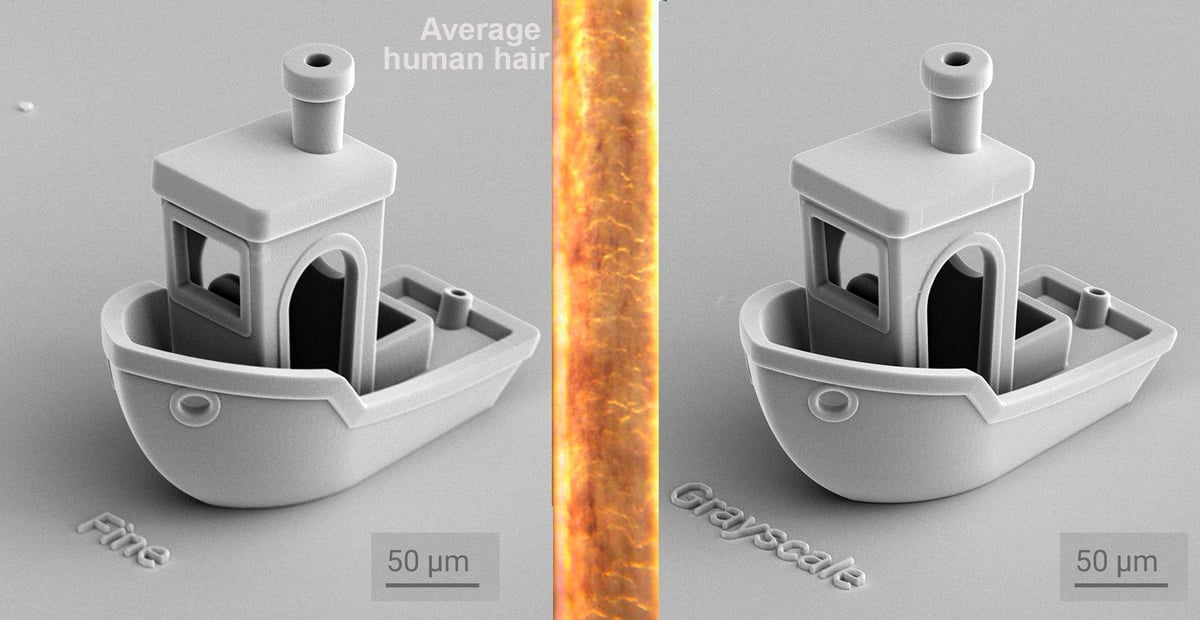
As for speed, Nanoscribe says the Quantum X Shape can batch process 200 typical mesoscale structures overnight. Materials include a range of photoresins and third-party and custom materials.
UpNano

Austrian manufacturer UpNano wants to dispel the notion that 2PP printing is slow. The batch of functional micro springs pictured below with a height of 11 mm printed in just over 33 hours.
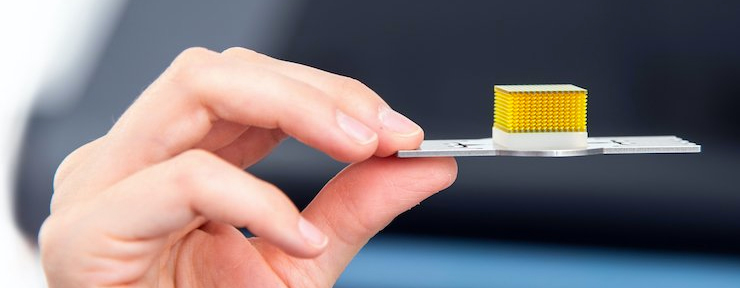
The company’s NanoOne printing system can produce micro components with high resolution and structural details in the range of 170 nm, but also takes a step toward batch and series production. Applications include microneedle arrays, microlenses, and super repellent surfaces.
Nano Dimension Fabrica Group

The Fabrica Tera Series micro 3D printer from Nano Dimension operate on a micro-DLP level by projecting UV light into a vat filled with a proprietary polymer resin and curing it layer by layer into a 3D build. The system is capable of achieving one-micron resolution over a build volume measuring 50 x 50 x 100 mm. The machine is capable of fabricating a wide range of products from microelectronics casings and microsensors to optics and parts for medical applications.
The Fabrica Giga Series has a smaller build volume focused on micro-level precision and a faster print speed than the Tera.
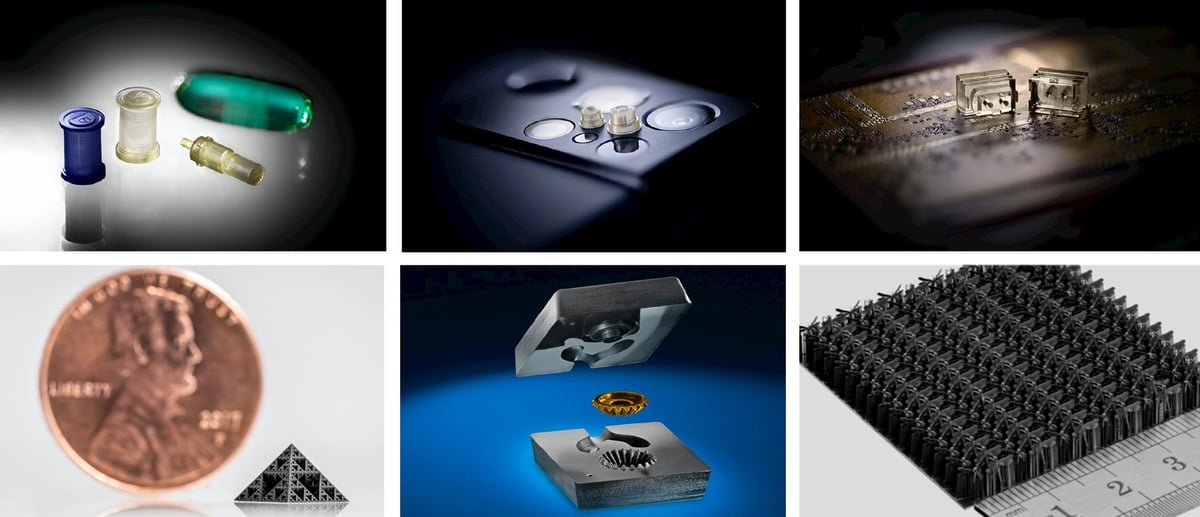
Incus
Austria-based Incus is an engineering start-up offering a lithography-based metal additive manufacturing printer called the Incus Hammer Lab35. Incus introduced its newest and largest 3D printer, the Hammer Pro40 in November 2023. Building on the principles of the Hammer Lab35 printing system, the Hammer Pro40 is six times larger and enables production capabilities, the company says. The larger build volume is achieved by two scrolling projectors, instead of one stationary projector.
The applications for the Incus metal printing technology cover a wide spectrum of industries, including functional parts and components for aerospace, energy, medical, and automotive, as well as for jewelry.
Since commencing commercial production of the Hammer printer in early 2021, several have been installed at universities in Europe. Incus has also recently partnered with the European Space Agency to develop and test 3D printing in a micro-gravity environment.

Exaddon

Exaddon is a 3D printer manufacturer based in Switzerland that uses a unique process called electrochemical deposition technology that is able to 3D print pure metal objects at the micrometer scale with submicrometer resolution. The technology can also repair minute metal structures, such as semiconductors.
A small printing nozzle, called an iontip, is immersed in a supporting electrolyte bath. A liquid containing metal ions is pushed through a microchannel inside the iontip onto a print surface. The dissolved metal ions are then electrodeposited into solid metal atoms layer by layer. The process leads to metal structures that are immediately ready for their application – there is no need for any post-processing.
The company’s Ceres 3D microprinter also features two high-resolution cameras with computer-assisted alignment that enable pinpoint-accurate printing, for example printing directly onto integrated electrodes that are pre-defined on a chip surface. The cameras also support automated iontip loading, as well as visualization of the printed structures.
The system works with the Exaddon Capa software.
3D MicroPrint

German manufacturer 3D MicroPrint was founded in 2013 by 3D printer manufacturer EOS to refine metal 3D microprinting. The company offers two series of micro selective laser sintering (μ-SLS) machines along with a 3D print service.
This industrial DMP6X and DMP7X 3D printers are designed for industry and research. The most popular of its machines is the DMP60, which can prints with non-reactive and reactive materials with a high-power laser option available for processing of high-melting temperature materials. The DMP70 series is the most current machine generation for μ-SLS that’s based on the DMP63 but is an enhanced version, the company says.
Microlight3D

French company Microlight3D manufacturers of ultra-high-resolution 3D printers for industrial and scientific applications. The company’s two-photon polymerization (TPP) technology, which includes proprietary software tuned for increasingly faster direct laser writing speeds with sub-micron resolution, is compatible with a wide range of polymers and biological materials. In June, 2022, the company introduced eight new resins with diverse properties for mechanical and life sciences applications. The resins range from flexible to rigid to biocompatible and create opportunities for developers to explore new applications for 3D microprinting.
Sold worldwide, Microlight3D’s microprinting machines produce ready-to-deploy 3D structures in any geometric or organic shape with a micro-fabrication resolution 100x smaller than a strand of hair. These micro parts are used in micro-optics, microfluidics, micro-robotics, meta-materials, and cell biology applications.
Femtika

Femtika is a start-up that specializes in hybrid microfabrication technologies using a femtosecond laser for TPP micro 3D printing as well as subtractive methods, such as selective laser etching. Their machine, which they call a “workstation for femtosecond laser multiphoton polymerization, selective laser etching, and laser ablation processes”, is a customized solution for laser micro-fabrication process.
The Laser Nanofactory workstation, which combines additive and subtractive manufacturing, is equipped with femtosecond laser synchronized with galvano-scanners resulting in “stitching-error-free manufacturing over the entire working field (160x160x60 mm) without sacrificing the speed or the quality,” the company says.
The system is driven by the company’s 3DPoli software for controlling both the TPP and 3D glass inscription among other capabilities.
Multiphoton Optics
The MPO 100, from Heidelberg Instruments, is a TPP 3D printer for microprinting structures with applications in optics, photonics, mechanics, and biomedical engineering. The modular 3D printing platform offers high volume printing and enables the production of complex functional microstructures with high throughput in a single process step, the company says.
Running on commercially available polymer systems including organic hybrid polymers known as Ormocer, the MPO 100 is an ideal tool for R&D to develop new material systems. The MPO 100 includes a software package of LithoStream and LithoSoft3D as standard.
Order Microscale 3D Printed Parts

If buying your own microscale 3D printer isn’t feasible, there’s a select number of 3D printing services that do own the technology. Print-on-demand services, such as those listed below, specialize in low-volume and custom parts where prices can be significantly lower than services that use microinjection molding.
License: The text of "Micro 3D Printing – The Ultimate Guide" by All3DP Pro is licensed under a Creative Commons Attribution 4.0 International License.




